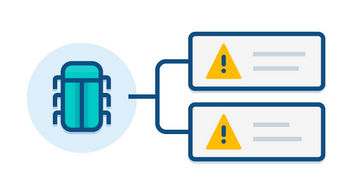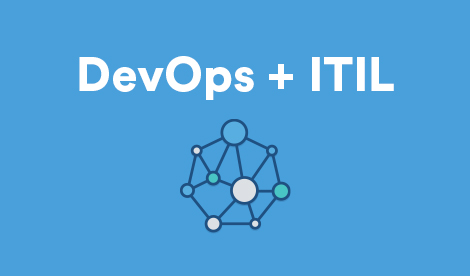Bridging DevOps and ITIL
The IT world you know and love exists primarily today thanks to the bedrock of the IT community: ITIL – the IT Infrastructure Library. Initially published between 1989-1996, ITIL has grown to more than 30 volumes and is considered the bible of IT best practices. ITIL is the steadfast discipline in IT worldwide, with over two million people trained and certified. At its core, ITIL is a framework ensuring IT services align to business needs and helps manage service delivery from start to finish.
This is a guest post from John Custy– President of JPC Group and a 35-year veteran of the IT industry.
The IT world you know and love exists primarily today thanks to the bedrock of the IT community: ITIL – the IT Infrastructure Library.
Initially published between 1989-1996, ITIL has grown to more than 30 volumes and is considered the bible of IT best practices. ITIL is the steadfast discipline in IT worldwide, with over two million people trained and certified. At its core, ITIL is a framework ensuring IT services align to business needs and helps manage service delivery from start to finish.
 Since ITIL’s inception 26 years ago, the world has changed. Twenty years ago, there was no Facebook, Google, smartphone or wireless Internet. But today in 2015, we’re in the midst of a new technological age. There’s an app for everything we do, whether it’s shopping, emailing, scheduling meetings, or staying connected on social media. We can call cabs from watches, create 3D objects at home, and even track fitness with wearables.
Since ITIL’s inception 26 years ago, the world has changed. Twenty years ago, there was no Facebook, Google, smartphone or wireless Internet. But today in 2015, we’re in the midst of a new technological age. There’s an app for everything we do, whether it’s shopping, emailing, scheduling meetings, or staying connected on social media. We can call cabs from watches, create 3D objects at home, and even track fitness with wearables.
Software development is pioneering innovations in mobile, social, and cloud technology. Big things are happening in software. And its evolution has been enabled by agile methodology and now, DevOps.
There’s pressure on IT to live up to the expectations that the world expects. Because DevOps and agile are paving the way for new technologies, IT must adapt.
To do this, ITIL must support an agile DevOps environment. By working together, these practices reinvent how IT teams deliver consumer-grade services to the business, faster.
A very simple explanation of ITIL
A little more on ITIL – it’s a practical guide for IT services strategy and management.
Here are the five stages of the ITIL framework, according to ITIL V3 2011 Edition.
Service strategy
This stage is about deciding on a strategy to serve customers – the goal is to make sure the IT org is acting in a strategic manner that starts from an assessment of customer needs.
Service design
Part of your ITIL lifecycle is designing new IT services – this process is not only about new services, but changes and improvements to existing ones.
Service transition
After design, it’s time to build and deploy those IT services. The service transition stage makes sure these processes are carefully coordinated.
Service operation
This stage is part of any IT org’s day-to-day activities – making sure that IT services are delivered effectively. This includes fulfiling customer requests, resolving service failures, fixing problems, and carrying out routine operational tasks.
Continual service improvement
Finally, your services must always be improving. This stage is about learning from past successes and failures. It aims to improve the effectiveness and efficiency of IT processes and services.
Overall, ITIL aims to align IT and the business. Its framework is built to support business change while maintaining a stable service environment.
How DevOps and ITIL overlap
The lines between IT teams are blurring – not only are there service management and operations teams, but development teams who build applications for the organization. Developers want to work in an agile fashion – and it’s best for the organization that they do. This means having a frictionless release process, and continuously improving software for customers.
You can combine ITIL processes with an agile workflow to get the best of both worlds: better software and a reliable, stable environment. Here’s how the ITIL framework supports an agile and DevOps environment.
Link incidents and problems
Want to make your ITIL org more agile? Don’t separate “incidents” and “problems” – everything should be cohesive.
“Related incidents and problems should be merged into a single situation.”
– Stephen Hart, CTO at Moogsoft
In ITIL orgs, there’s an assumption that you need multiple instances of the same incident before you start problem analysis. Rather than waiting for incidents to pile up, you can detect and solve problems faster with DevOps practices.

Hart explains further in his article: “combining related incidents and problems into a single situation allows service management teams to work together to get customers up and running.” All of this happens “while detecting the root cause of the service degradation earlier, and having it restored faster.”
An incident by any other name is still an incident
ITIL orgs might categorize incidents as only coming from the service desk, phone or email channels. DevOps classifies incidents as coming straight from the infrastructure itself. But, in reality, it’s all the same – it’s a matter of categorization.
For ITIL and DevOps to work together, you should expand how you categorize incidents. Reports can come from different sources, but relate to a single underlying issue.
Automated monitoring tools like New Relic, Pager Duty, or Nagios alert teams when there are server issues. While these alerts might go unnoticed by end-users, your IT team will be able to review them and uncover problems long before they start impacting end-users.
It’s about making data visible; these sources can be combined into a single situation, enabling faster resolution.
ITIL supports DevOps with analysis, issue detection, and collaborative resolutions.
Changes and releases
 When it comes to change and releases, many IT orgs drown in bureaucratic headwaters. In an agile DevOps environment, releases are frequent. Typical agile workflows include scrum, sprints, and continuous deployments.
When it comes to change and releases, many IT orgs drown in bureaucratic headwaters. In an agile DevOps environment, releases are frequent. Typical agile workflows include scrum, sprints, and continuous deployments.
The ITIL framework combined with DevOps means that development, operations, and support are always collaborating. It means that change requests are easily linked from incidents and problems. Changes can be added to a developer’s backlog and allocated to their sprint on a regular basis.
For example, an IT org could be receiving reports on a slow loading login page. The underlying issue is confirmed by a bad Apdex score, which is a user satisfaction score reported by New Relic. The problem might be a runaway query – and the development team implements the change into their next sprint, which happens on a weekly basis. From incident to resolution at scale, the turnaround time is as little as 1-2 weeks.
Faster, higher-quality services are no secret. According to Puppet Labs 2015 State of Devops Report, high-performing IT orgs are deploying at 30x the frequency of their peers, with a change success rate of 60x. With the right practices, the ITIL framework perfectly supports the agility of DevOps.
Do you agree that ITIL can be combined with DevOps? Leave your comments below.
If you’re interested in more DevOps, get the latest ebook by ITSM expert John Custy. He’ll show you how to bring DevOps principles into your IT support team with actionable tips.
